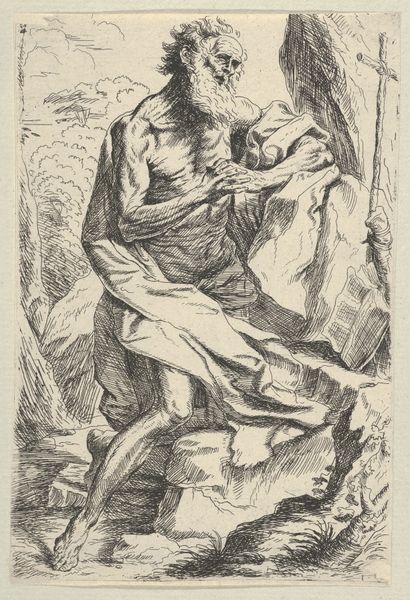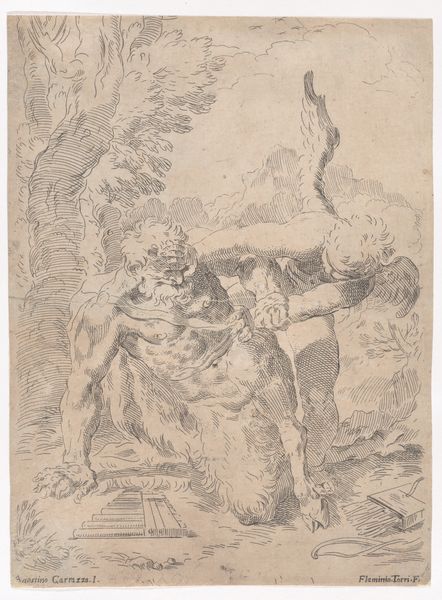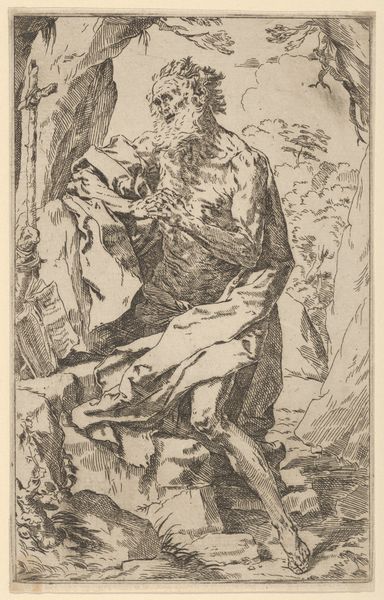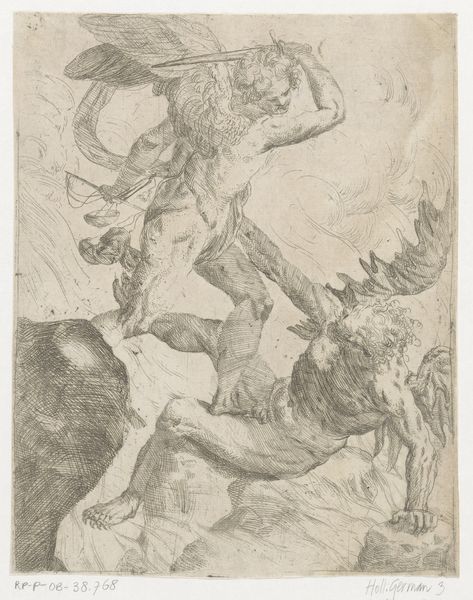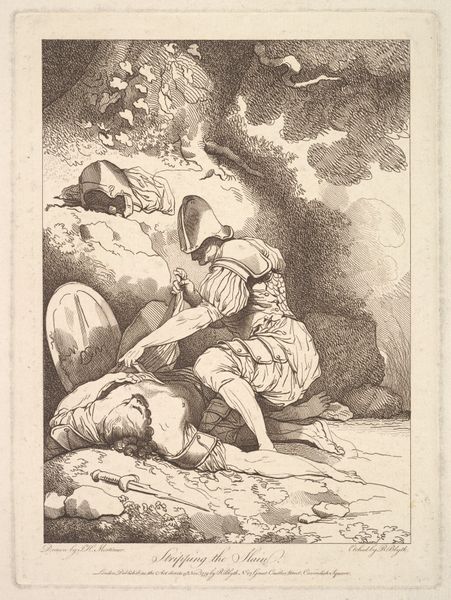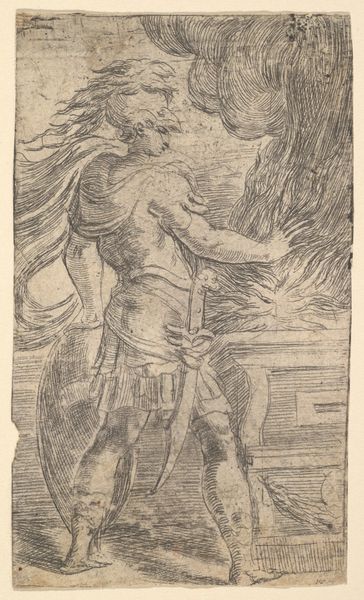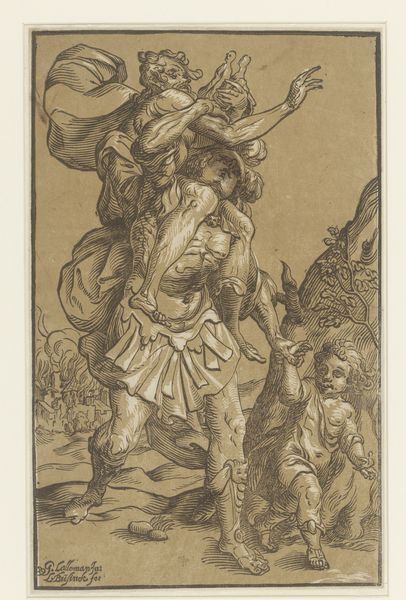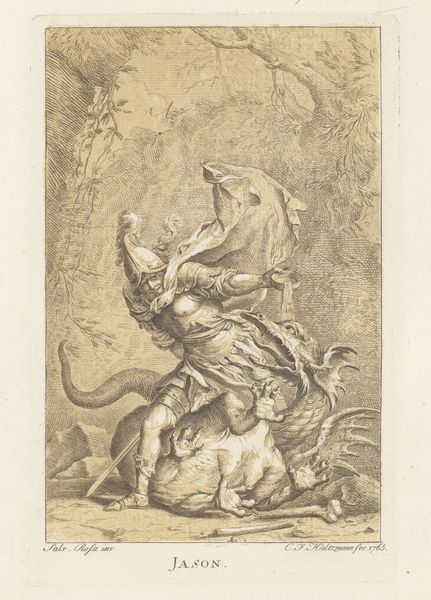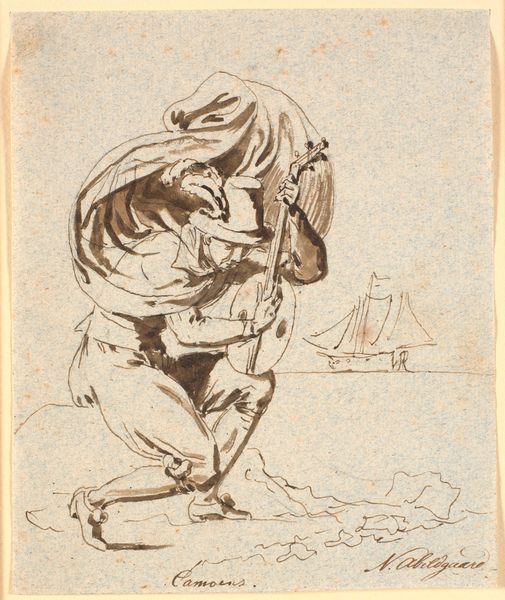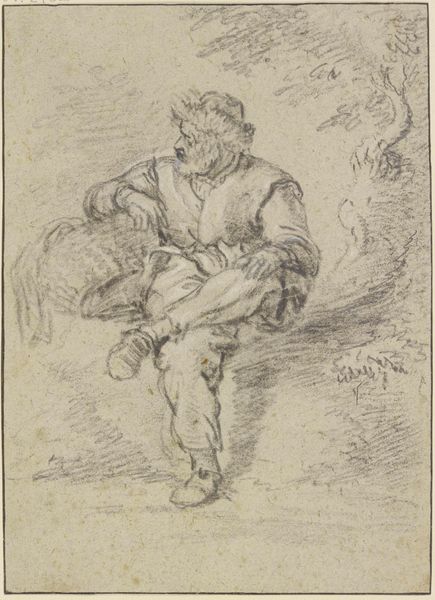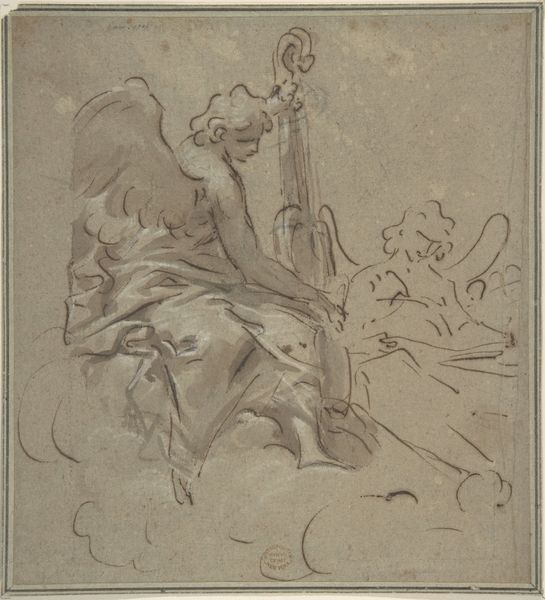
print, engraving
#
narrative-art
#
baroque
# print
#
old engraving style
#
figuration
#
history-painting
#
engraving
Dimensions: height 331 mm, width 300 mm
Copyright: Rijks Museum: Open Domain
Curator: Looking at this engraving, “Kaïn Slaat Abel dood” – Cain Killing Abel – by Giuseppe Maria Mitelli, dating back to 1669, my first impression is... well, it’s brutal, isn't it? All raw energy and dramatic angles. Editor: Absolutely. Notice how Mitelli used the engraving process— the literal carving of lines—to convey such stark violence and suffering. The material act mirrors the subject. It’s visceral. Curator: It’s also incredibly theatrical, a bit Baroque in its over-the-top depiction. Cain looks almost monstrous, his pose twisted and weapon raised high, while Abel seems utterly helpless beneath him. What gets me is the stark contrast: pure rage versus complete vulnerability. I think that hits right in the gut. Editor: Indeed, let’s consider what it means to translate that moment of primal rage, of fratricide, into ink and paper. The choice of engraving – a process that demands meticulous planning and skilled labour – seems almost perverse. Highlighting the tension between refined craft and the raw brutality it depicts. Who was meant to own or handle it? Curator: That’s a fair question, because this print could be widely circulated, unlike an original painting only visible to a few. You see a common scene of religious instruction for both educated and common people across social lines at this time period, almost democratizing biblical imagery. Editor: And what is democratizing here, but mass production, of images of violence, made possible through skillful carving? The artist may be representing a religious story, but the context relies on economic drivers to gain relevance. It's both the word and the means to its reproduction that become a powerful statement here. Curator: It makes you wonder what Mitelli was trying to communicate about the nature of humanity itself, you know? Are we all capable of such darkness? Is it inevitable, this descent into violence and loss? It kind of speaks to something deeper, beyond just a literal biblical narrative, perhaps it reflects an ancient myth of man's constant desire to assert dominance. Editor: So, we find ourselves confronting the paradox: a beautifully crafted object memorializing a moment of profound human ugliness. I wonder how our experience of conflict might be shaped differently if we paid more attention to the material processes behind representing it? Curator: It just sort of brings this ancient tale into sharp focus, a reminder that the capacity for violence, alas, is woven into the very fabric of our stories. Editor: A brutal, sobering intersection of craft, capitalism, and ancient narrative. A warning perhaps...etched in ink.
Comments
No comments
Be the first to comment and join the conversation on the ultimate creative platform.
